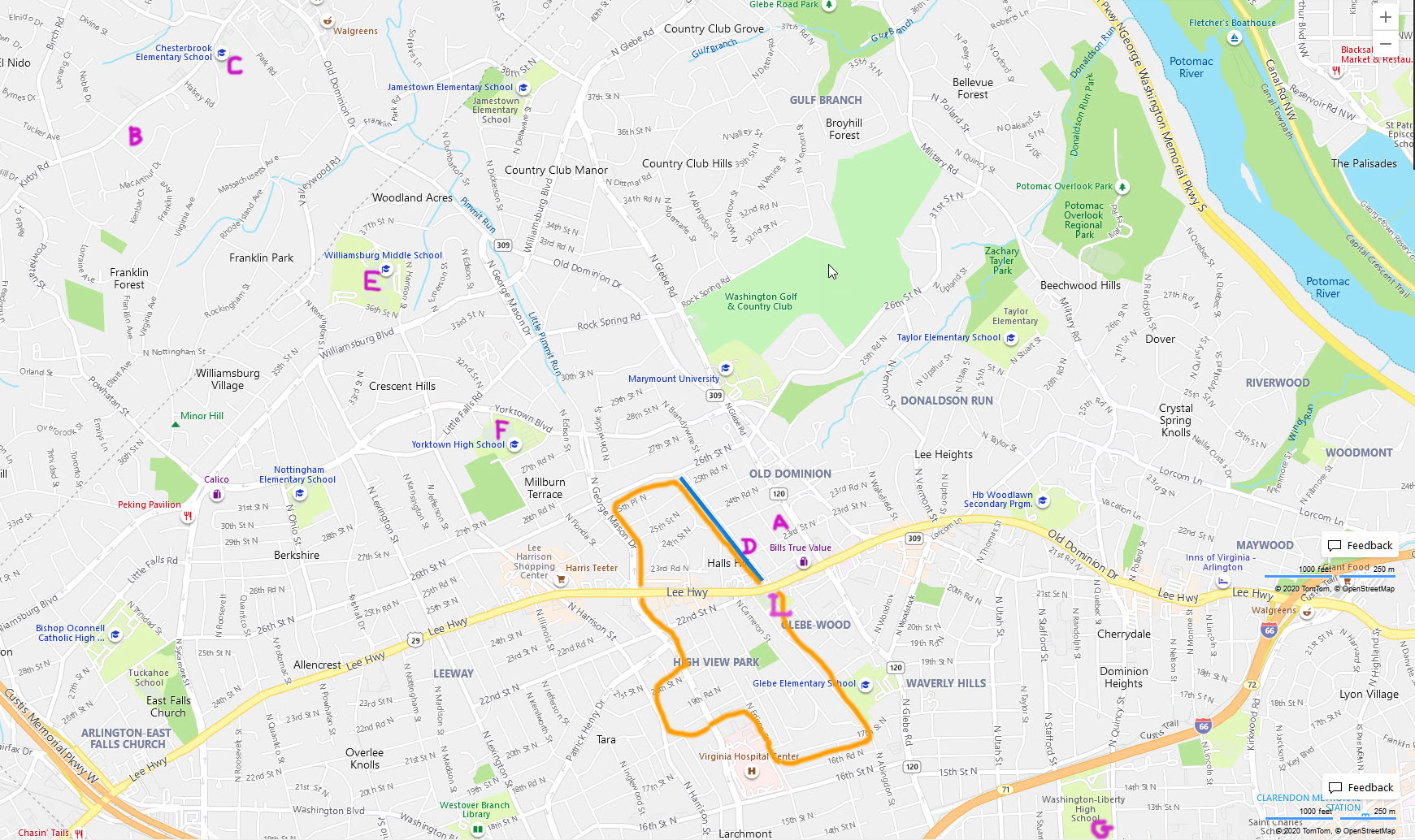
The area enclosed in orange is Hall's Hill, a community founded after the Civil War by freed slaves, one of several historic Black communities in Arlington. It was separated from the surrounding areas by six- or seven-foot high walls made of wood and masonry. The blue line is the part of wall I was familiar with, but probably the entire orange line was walled. Our house was just 200 feet from the wall. As an 11- to 13-year old kid growing up in the segregated south I didn't think much about it, but when we returned from Germany, where the Army base and school were totally integrated and diverse, the wall bothered me a lot but I knew next to nothing about the people of Hall's Hill, hard-working taxpayers who were engaged in a neverending struggle with the county government for resources that all the white neighborhoods got like paved roads, sidewalks, running water, sewers, and decent schools for their children. L is Langston elementary school for Hall's Hill children. G is Washington-Lee High School, which would have been very convenient to Hall's Hill teens but it was white-only so black students had to go all the way to Hoffman-Boston high school in South Arlington, 5 miles away and no school buses or public transportation plus it was never accredited by the state, so many Hall's Hill teens attended high schools in DC, very convenient to the WV&M buses that stopped on Lee Highway.
The wall was not the only way Hall's Hill was cut off from the white suburbs. The roads within Hall's Hill were all dead ends, except for two that connected to Lee Highway so the residents could spend money in the shopping area that was centered around Lee Highway and Glebe Road. Many of the businesses were white-only: such as Peoples Drug Store, the Glebe Theater, the barber shop, and Evans Coffee Shop. Others were open to black shoppers, most notably the Safeway supermarket, but also High's Ice Cream, and probably the hardware store. I think there was a also a bank and I can't imagine it barring entry to blacks. And Robertson's Five and Ten Cent Store, but the lady there, Libby, who was very nice to white children, used to follow Black children and teens around when they came in because she thought they were shoplifters. I never knew this until recently.